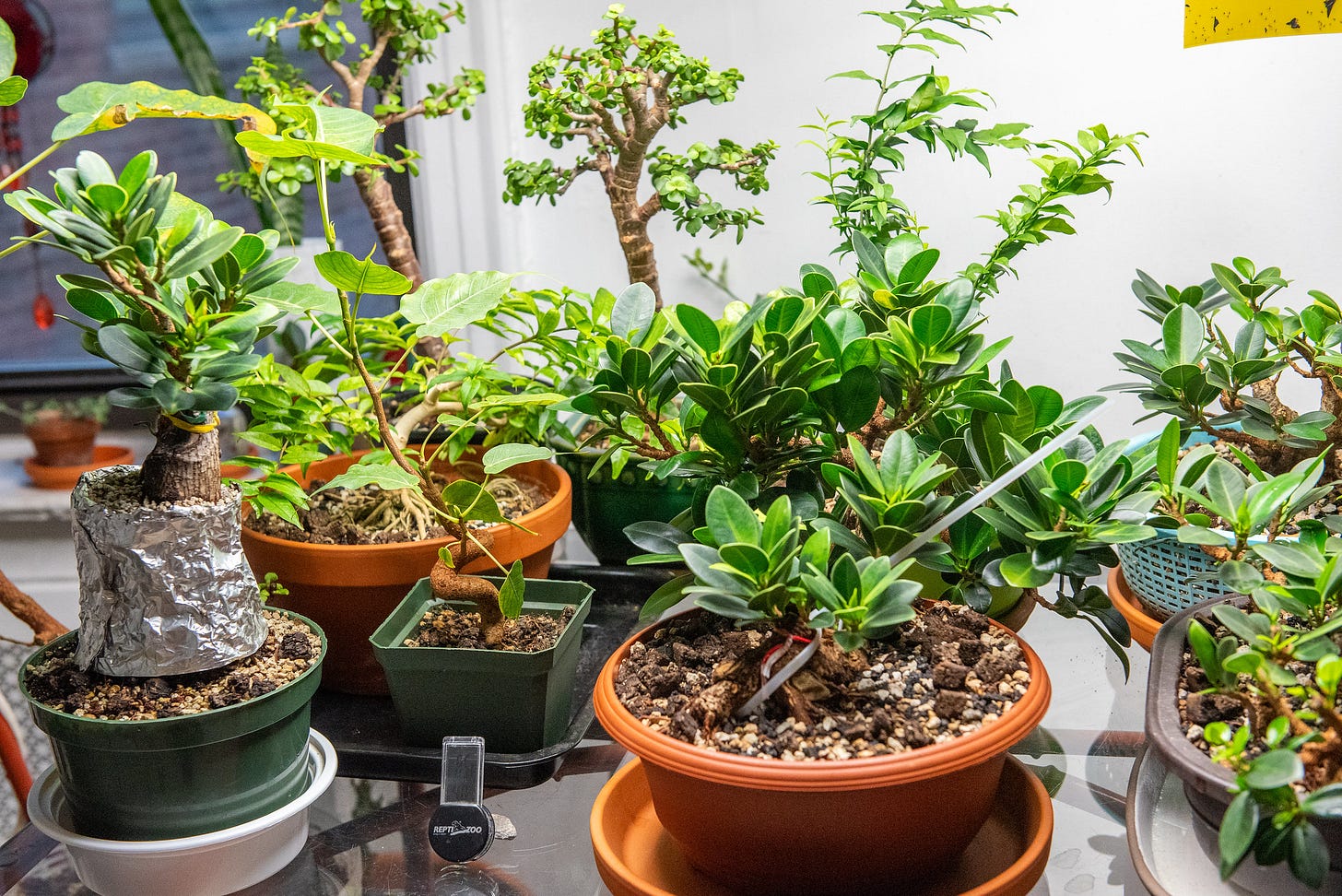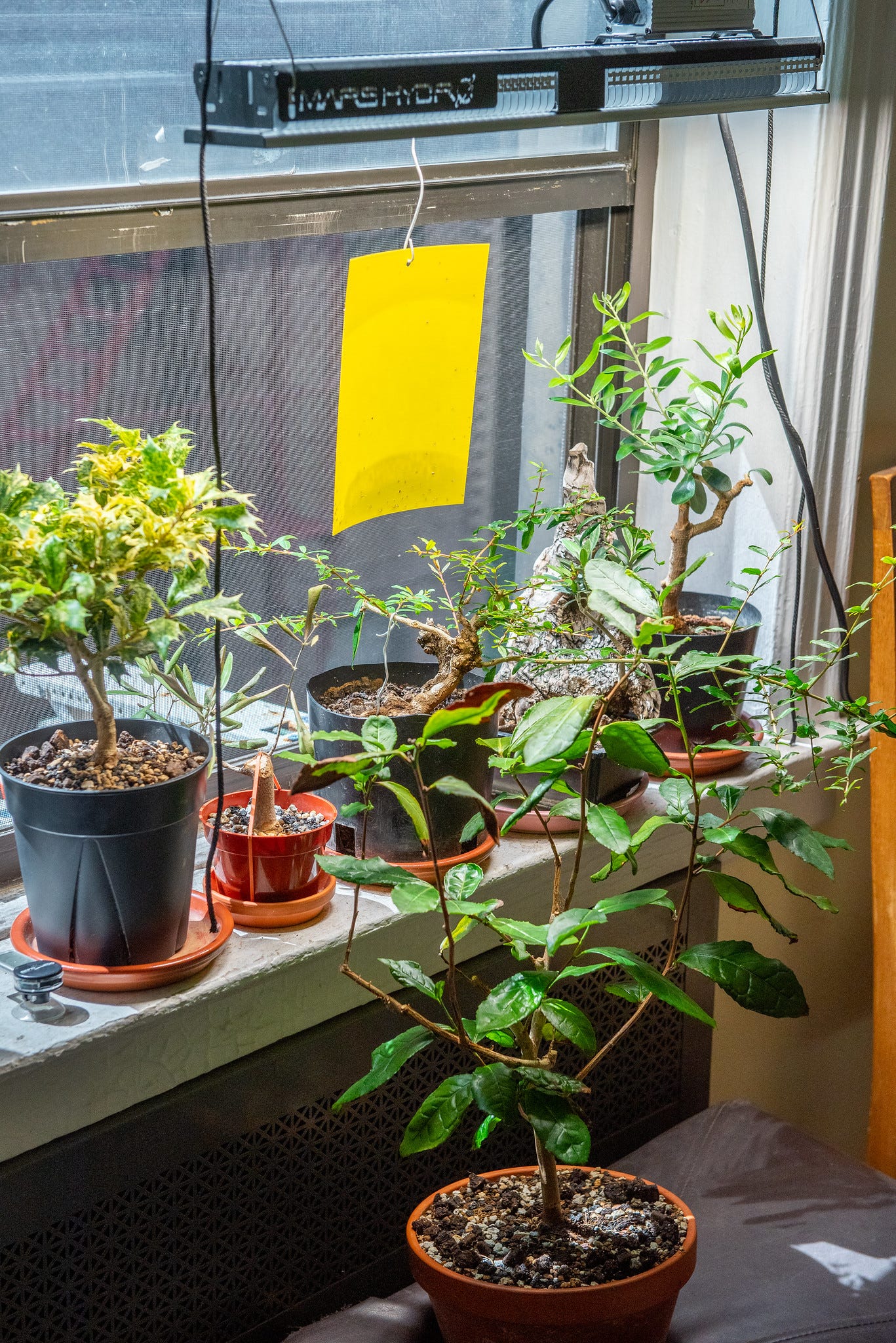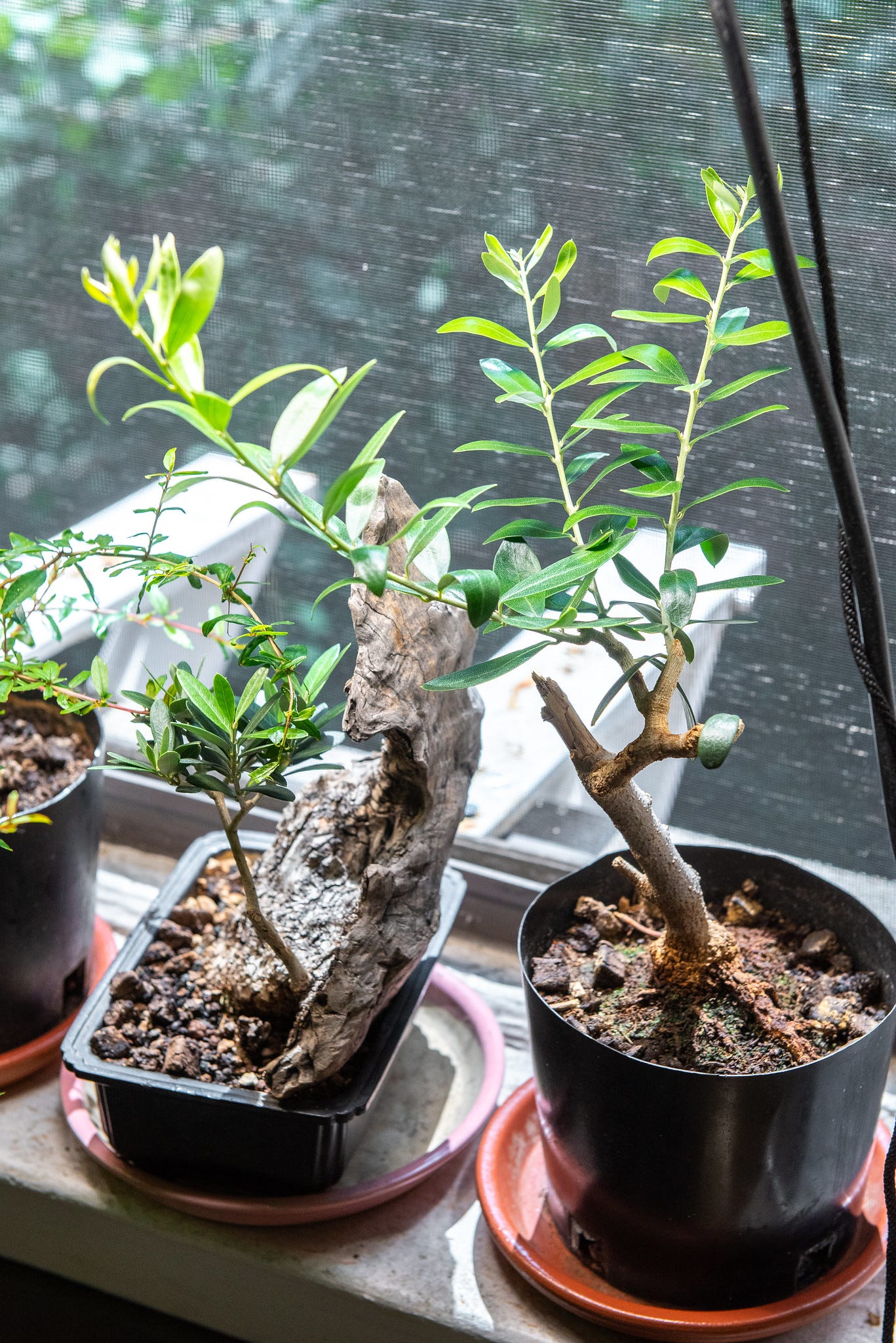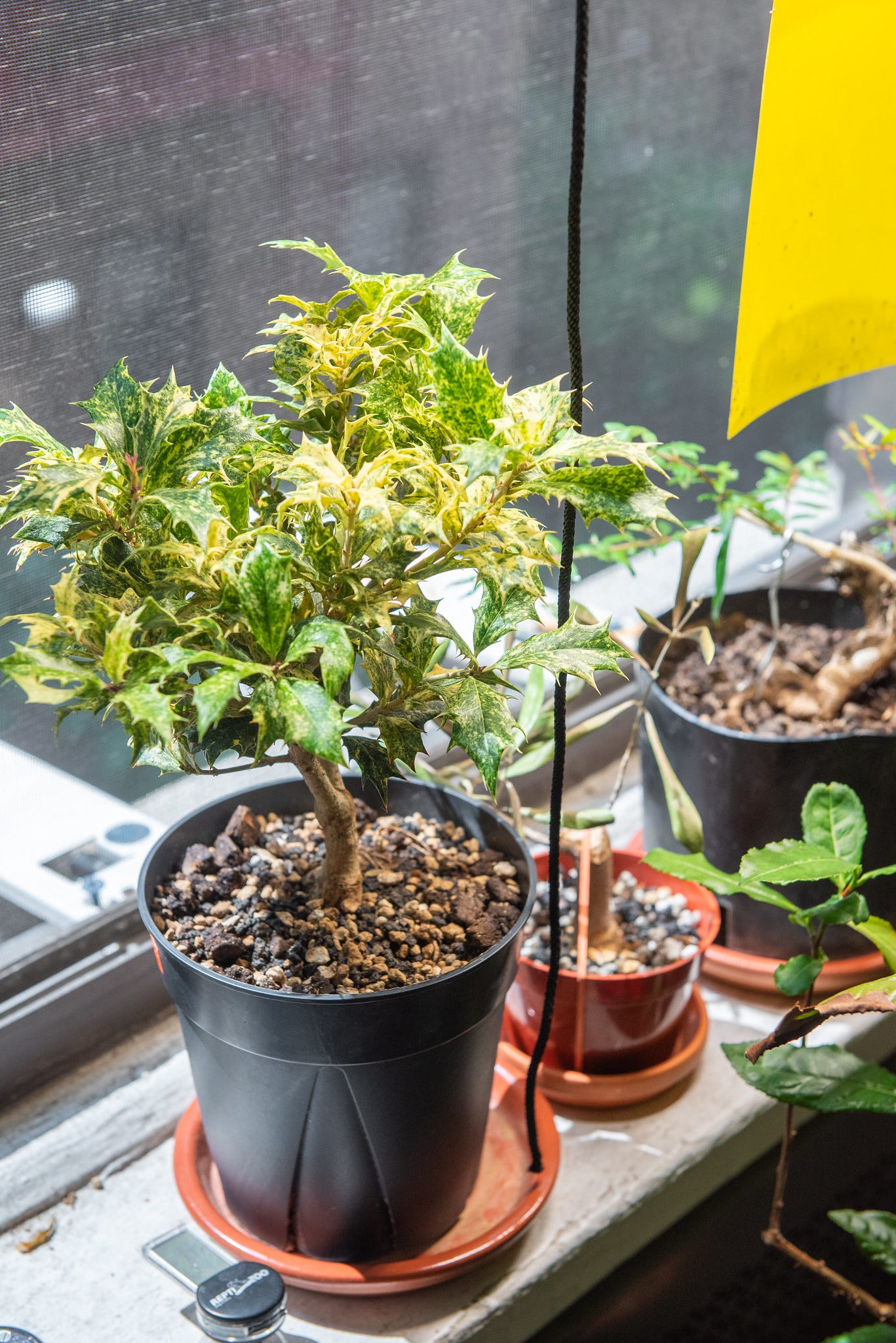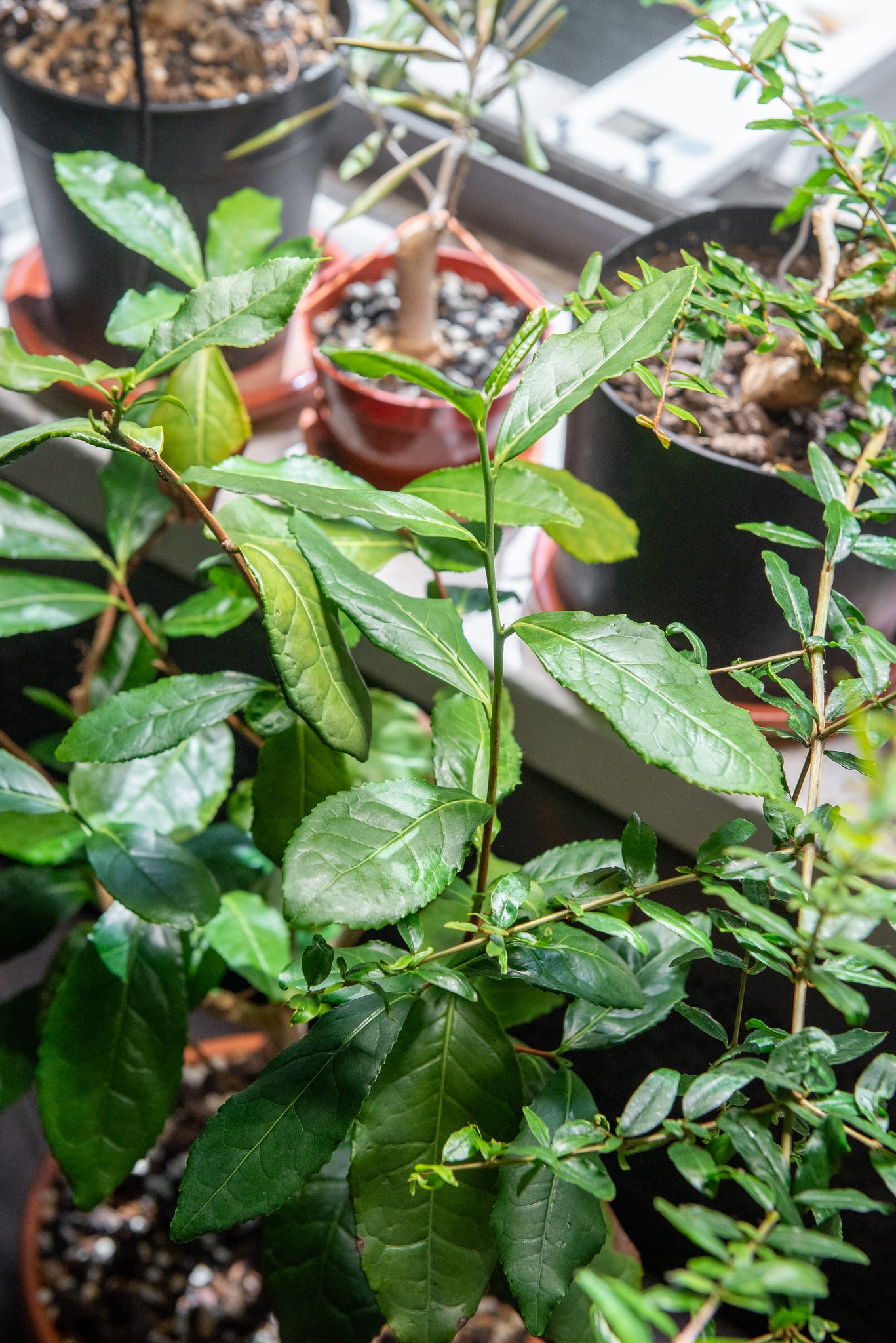My indoor bonsai setup, 18 months in
A progress report on my tropical trees and a peek into my power bill.
For those who are new, let’s start with a recap of last season on Fire Escape Bonsai. When I began this project in 2021, I kept temperate trees on my apartment’s fire escape. Eventually building management caught on and made me take them in, setting in motion a series of temporary accommodations, including a friend’s backyard and the back lot of a neighboring apartment coop. For the last year they’ve resided in the planters of a friendly neighborhood restaurant, where they enjoy ample sunshine and a little public attention. It’s a good arrangement.
Still, I missed midday waterings, idly checking new leaf growth while on the phone, and nights spent studying a tree’s next steps. Bonsai aren’t pets, but there’s a relationship of some kind, and I think they and we do best when near each other. So in the beginning of 2022, I expanded my collection to include tropical and subtropical bonsai that could be grown indoors. You can read all the technical details of my two setups in those posts. Here’s how they look today.
You can see the collection has grown. My tropical grow room currently houses four ficus microcarpa projects as well as two sacred figs, water jasmines, and portulacaria afra. Casualties include my citrus tree, I believe due to user error, however most trees have thrived in this environment. Temperatures range between the high 60s and the high 80s depending on the season, with enough ambient humidity to keep the plants happy. (These are also good conditions for aging puer tea; one of my storage tubs makes a cameo to the left of the money tree.) If you don’t mind hanging a large lighting rig and keeping it on for 16 hours a day, your kitchen is likely just as suitable for growing tropical bonsai.
This subtropical setup was a greater gamble. Trees like olives, pomegranates, and camellias can mostly handle indoor climates with sufficient light, but they benefit from a winter rest period, even if they aren’t hardy to deep frosts. My challenge was to make a microclimate mimicking a sunny spot in the Mediterranean, somewhere protected from strong winds but still exposed to the elements.
The window above stays open year-round—except for summer nights, when the AC is on—and I adjust the light’s timer to loosely follow sunrise and sundown times, adding a few hours to give the trees a longer day. According to my handy hygrometer, temperatures in spring, autumn, and winter track within 10 degrees of the outdoors, and within 10 percentage points of outdoor ambient humidity. Summer figures are even closer. When there’s risk of strong frost on certain winter nights, I simply shut the window. 18 months in, I’m cautiously optimistic.
Casualties in this zone include three pomegranates that I’m pretty sure I lost to frost. In fact, I think I can pinpoint the day it happened. I wasn’t around that morning to check on the trees and missed a crucial window to save their lives. It happens. What I can say is that up until they died, they grew so vigorously I had to trim them back once a month.
My olives and my tea plant have fared better so far. They pause growth in the fall and resume in the spring, which isn’t proof that they met the metabolic requirements for dormancy, but according to my calculations, they experienced sufficient chill hours to qualify.
We’ll see how it goes. Bonsai is a long game. I won’t know the full impact of this growing environment for years, though I’m excited to find out.
At this point you might wonder how much it costs to run these setups. In the name of transparency, I’ll share some numbers.
My Mars Hydro grow lights cost $227 and $136 for the large and small ones, respectively. The plants seem to grow well underneath them and the lights haven’t given me a lick of trouble. Two analog timers and two hygrometers totaled another $20.
The real cost of indoor growing is power consumption. In 2022, my Con Edison bill increased 50%, though that’s on average, not month by month, as this chart shows. In aggregate, that comes to an extra $565 spent on power in 2022 compared to 2021. So far my 2023 power costs are on par with 2022, though again with lots of month to month variance.
With data this messy I’m hesitant to say how much of that $565 increase is due to the grow lights or whatever Con Ed is up to. They’ve been hiking rates for years, and in 2018 a blown transformer of theirs turned the night sky alien invasion blue, so who’s to say. Public consensus suggests that LEDs are the most cost effective way to grow trees indoors, both in terms of equipment lifespan and long term power costs. I think it’s all going well.
I can say for certain that it’s going well for me. It turns out I like keeping trees close by, where we can share sunlight and keep an eye on each other. Though I do recommend you hang fly paper for the fungus gnats. You’ll want to.
Tree reading
Abandon your unproductive lawn in favor of pretty persimmon and paw paw trees! [New York Times]
Training fungi that feed on wood to set their appetites for plastic. [Phys.org]




